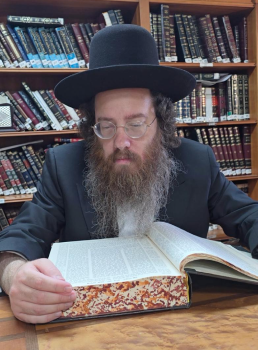A Set Seat in the Synaogue
Question
Answer
Shalom!
Thank you for your question.
Indeed, a person should establish a makom kavua, a designated place in the synagogue at which to pray. The source for having a makom kavua is attributed to Avraham Avinu, who established a designated place where he would pray, as it says, “And Avraham arose early the next morning and returned to the place where he stood before God.”
The Talmud teaches that one who designates for himself an exclusive place for prayer will “have his prayers answered by the God of Avraham, and when he dies they will say of him, ‘What a humble and righteous man! A student of Avraham Avinu!’” It is also taught that one who establishes a set place for prayer “will have his enemies fall before him.”
One is permitted to have a number of mekomot kavua, and one may even change one’s makom kavua should circumstances so warrant. For example, one may designate a makom kavua for the winter months and a different makom kavua for the summer months. Similarly, one may have a makom kavua in multiple synagogues, such as a makom kavua for weekdays and another makom kavua for Shabbat. One may even have a separate makom kavua for reciting each of the three daily prayers.
One should also have a place in one’s home that is designated specifically for prayer. This should preferably be in a location where one will not be disturbed by the other members of one’s household. In fact, a place for prayer should be the first room or area in one’s home to be designated and set up when first moving in.
In the event that one is unable to pray in one’s makom kavua, such as if someone else innocently sat there first, then one should pray in the immediate area of that spot. This is based on the halachic principle that the immediate area (within dalet amot, approximately two meters) of something is considered a part of that place, as well. So too, there is a view that the entire synagogue has the status of a makom kavua and, in an emergency, one may rely on this view.
One should not displace a guest or any other person who happens to sit in one’s makom kavua, as sitting adjacent to or even across from it is perfectly acceptable, as well. Indeed, one must never make a scene in the synagogue or embarrass someone who may have accidentally sat in one’s makom kavua.
Berachot 6b,7b; Yerushalmi Berachot 4:4; Rambam, Hilchot Tefilla 5:6; OC 90:19 and commentaries; Pri Megadim, EA 90:33.
